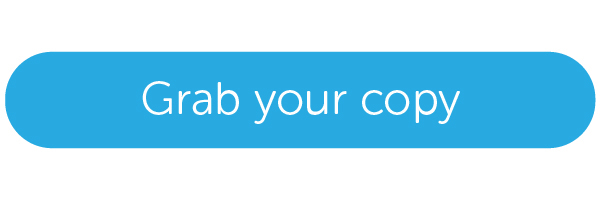Job shadowing is a useful but often-overused tool for employee training.
In fact, for learning and development professionals and HR managers, a well-structured job shadowing program is akin to finding a hidden gem in the corporate toolkit.
This guide is here to walk you through polishing that diamond till it outshines your other learning outcomes.
We’ve also included a simple questionnaire template for your employees to help them get the most out of their time watching and learning.
What’s job shadowing? How it works
At its core, a job shadowing experience is an on-the-job learning approach where an employee, or sometimes a prospective employee, observes another experienced staff member performing their daily tasks in their actual work environment.
Think of it as a live-action documentary of a specific role.
Typically, this involves the ‘shadower’ closely following the ‘host’ for a set period, which could range from a few hours to several days.
The main goal isn’t for the shadower to do tasks, but to learn about the role’s duties, challenges, and the skills training needed to succeed. It’s a direct, immersive method for knowledge transfer and desired career path exploration within the organization.
Looking for an eLearning platform to help employees build new skills?
Deliver on-the-job training in no time with TalentLMS.
The training platform that users consistently rank #1.
What are the 5 types of shadowing?
The job shadowing experience is more than just tagging along with a colleague for a day.
To really get the most out of it, a well-rounded employee training program will weave together a few key activities. Think of it less like rigid, separate “types” and more like different ingredients in a recipe for great on-the-job learning.
These elements can be mixed and matched to perfectly suit the role being explored and what everyone hopes to get out of the experience.
Here are some of the core activities that make a job shadowing program genuinely effective:
Pure observation
This is the classic, cornerstone activity of job shadowing opportunities. It’s where the shadower is closely and attentively watching the host employee go about their usual tasks in their natural work habitat.
The idea is for the shadower to really soak up what the role entails—the daily rhythm, the challenges, the quick wins.
Structured briefings and debriefings
Just watching is only half the story—understanding why things are done a certain way is where the real learning kicks in. That’s why structured chats before, during, and after shadowing sessions are so important.
The first meeting makes everyone understand each other. The host can explain their usual day, highlight important tasks, and show any specific projects the shadower might see.
Then, the debriefing sessions afterwards offer a chance for the host to explain the thinking behind their actions, discuss any curveballs encountered, and add color to what was observed.
For the shadower, it’s the perfect time to (perhaps with the help of a feedback guide) piece together their observations and get clarity.
Guided information gathering
Job shadowing helps an employee to learn about the information and resources that are part of a job. This means the host points the shadower towards important documents, systems, or databases that help get the current job done.
Meeting participation
Many career interests involve a fair bit of meeting time, and having the shadower sit in on these can be incredibly revealing. Shadowing in this way lets the participant see how the host shares ideas, collaborates, resolves issues as a group, and generally supports the professional goals of the team or company.
For example, shadowing a team leader might involve attending a weekly team huddle, offering a real glimpse into how tasks are delegated and progress is discussed.
Limited hands-on exposure
While job shadowing is mostly about watching and learning, adding a dash of carefully managed, hands on experience can sometimes really boost the learning and remembering.
We’re not talking about the shadower taking over tasks or lightening the host’s workload—absolutely not. It’s more about the host guiding the shadower through a small, simple, low-risk task to give them a more concrete feel for the work.
For example, someone shadowing HR might help make a welcome pack for a new hire (using a standard checklist). A person shadowing a social media coordinator might be asked to write a possible post for internal review and feedback.

Why is job shadowing important?
Job shadowing has a direct impact on sensitive business areas. And can form a crucial part of the employee training lifecycle.
For succession planning, you can expose talented employees to the realities of different jobs, helping them become leaders or specialists in the future.
It also systematically dismantles internal silos, a big headache since people started working hybrid and online. When an engineer understands a marketer’s day, or finance grasps operations’ pressures, genuine cross-functional teamwork replaces mere co-existence.
By its nature, offering job shadowing opportunities shows a real investment in an employee’s growth, greatly increasing engagement and loyalty.
Aside from directly supporting talent retention, it allows employees to discover untapped potential or new career trajectories within the business.
What are the advantages and disadvantages of job shadowing?
Job shadowing requires a clear view of its plus-points, and potential drawbacks for everyone involved.
For the employee, a direct look into future paths
For employees, shadowing offers a genuine, unvarnished look into different roles, which is invaluable for career exploration and as a general eye-opener.
Someone eyeing a team lead position, for example, can see the day-to-day juggling act firsthand, helping them make informed career choices. With that, they can either apply or plan to learn the required skills, clarify career pathways, and expand internal professional networks.
On the flip side, the purely observational nature might not suit those who thrive on hands-on action, and a poorly chosen host can turn an anticipated learning opportunity into a bit of a damp squib.
Plus, participants need to balance shadowing time with their existing workload.
For the organization, cultivating talent and cohesion
From an organizational standpoint, job shadowing is excellent for transferring that hard-to-document tacit knowledge—the ‘how things really get done around here’—and for spotting emerging talent.
However, organizations must understand the potential for a temporary dip in productivity for both the host and the shadower.
Effective shadowing also isn’t a zero-cost exercise. It requires thoughtful planning, matching, and ensuring hosts are prepared to guide, not just be watched. Without this, the initiative can fall flat, becoming more of a distraction than an employee development program powerhouse.

Meet TalentLibrary™
A growing collection of ready-made courses that cover the soft skills
your teams need for success at work![]()

How to implement a job shadowing plan: Tips and template
Rolling out a successful job shadowing initiative requires a structured yet adaptable approach. It’s about creating a genuine learning experience, not just a corporate field trip.
Here are some core pointers:
Define clear objectives
First, the organization must clearly articulate what success looks like. Setting specific career goals for both the business, perhaps improved cross-departmental understanding, and the individual ensures everyone is pulling in the same direction.
Thoughtful participant selection
Careful pairing of the shadower with a willing and able host is paramount. To deepen the learning, provide participants with tools like the job shadowing questions.
Use our Job Shadowing Questionnaire for Employees available with this guide, to help structure their observations.
Educate and prepare
Managers and hosts need clear guidance on their roles. Hosts aren’t just being watched; they’re mentors. Shadowers, too, need to understand the etiquette and how to maximize their learning.
Structure for learning
Develop a simple framework outlining duration, key focus areas, and feedback mechanisms. This structure should support, not stifle, the valuable, often unscripted, learning moments that arise.
Download our new job shadowing questionnaire.
Assist job shadowers in having a more engaging experience in just a few clicks.
How to create a virtual job shadow program
Job shadowing online isn’t just a backup plan anymore. It’s a real way to open up learning opportunities, especially when it’s hard to get everyone in the same room.
With a thoughtful approach, it can be surprisingly engaging and give a real window into different roles.
Get your tech comfortably right
Making virtual shadowing work well starts with picking the right digital tools and using them comfortably.
Think about platforms that make screen sharing a breeze, so shadowers can easily watch tasks unfold – like seeing how software is used or company systems are navigated.
Good, reliable video conferencing and chat tools are also key to keeping that human connection alive.
Plan the digital day with care
The online world needs a bit more deliberate planning. It helps to sketch out a clear schedule that mixes live screen observation with chances to sit in on virtual team meetings.
Importantly, set aside dedicated times for the host to talk through what they’re doing and why.
Encourage active looking and listening
To be honest, those spontaneous conversations by the coffee machine are hard to copy online. Therefore, it’s important to actively participate and encourage engagement.
Hosts will find it helpful to get used to ‘thinking aloud’ as they work digitally. Shadowers, too, can get more from the experience if they come up with a few ideas of what they’re keen to see, helping keep the learning sharp, even through a screen.
Make space for connection and thoughts
It’s wise to think about how to create certain informal learning moments online—maybe a quick virtual coffee break.
Having a simple way to get feedback helps the organization keep improving its virtual shadowing and make sure it’s really useful for everyone involved.
Why job shadowing remains a smart move
It turns out, even in 2025, one of the most effective ways to truly understand a role is simply to see it through another person’s eyes.
This act of structured observation, when thoughtfully organized, clarifies career options, builds genuine understanding between departments, and offers employees insights that no manual can replicate.
For businesses keen on nurturing internal talent and fostering a genuinely collaborative culture, job shadowing remains a potent, refreshingly human-centered tool for development and connection.
Facilitate virtual job shadowing with TalentLMS
Schedule online training sessions and use video and screen recording.
Easy to set up, easy to use, easy to customize.
FAQs
What’s the difference between job shadowing and an internship?
Job shadowing is mainly about observing a professional for a short while, perhaps a day or two, just to get a feel for their role. An internship, on the other hand, is usually longer and involves you actually doing work, taking on tasks, and learn to manage skills.
Is work shadowing the same as job shadowing?
These two terms—’work shadowing’ and ‘job shadowing’—generally mean the same thing. Both refer to spending time watching someone perform their job to understand what their work typically involves.
Originally published on: 25 May 2023 | Tags: Employee Training,new-entry employees,Soft Skills Development



